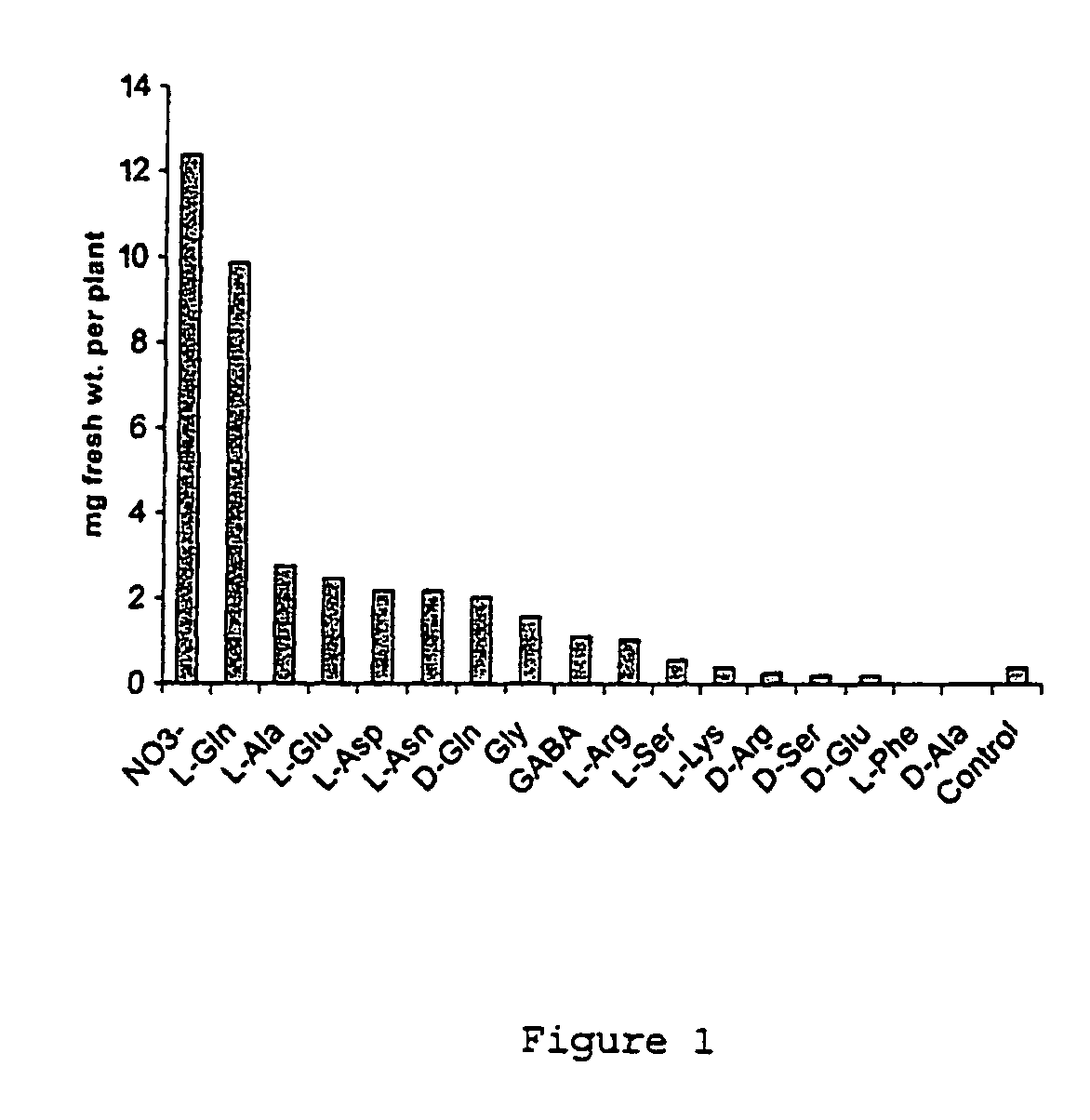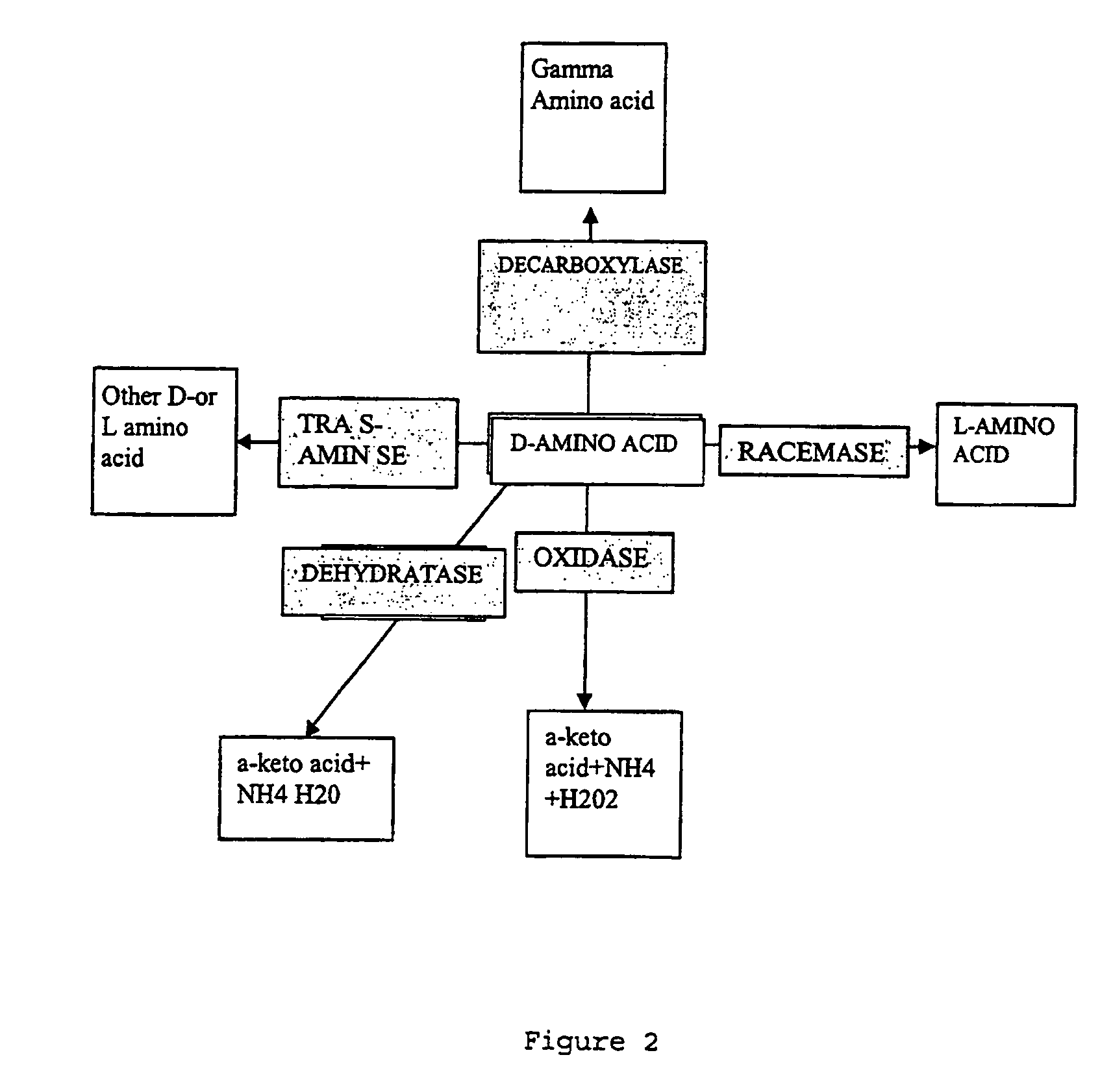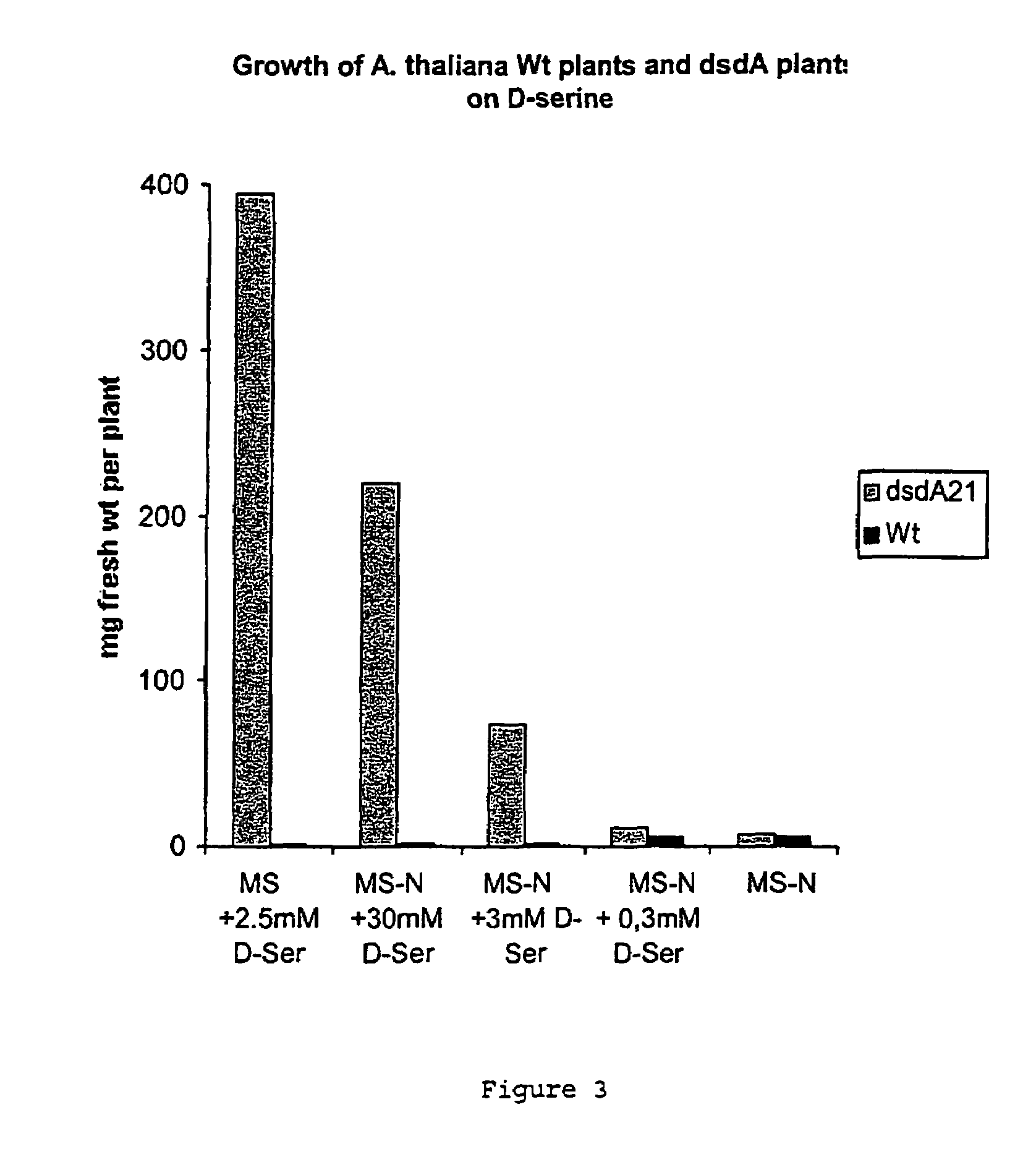Selective plant growth using d-amino acids
- Summary
- Abstract
- Description
- Claims
- Application Information
AI Technical Summary
Benefits of technology
Problems solved by technology
Method used
Image
Examples
Embodiment Construction
[0016]Generally, only a single D-amino acid metabolising enzyme is needed to convert the D-amino acid into compounds that can participate in the usual plant pathways of nitrogen metabolism (i.e. compounds which are non-dextrorotatory).
[0017]For example, the enzyme D-serine dehydratase may be used to convert D-serine into ammonia, pyruvate and water and D-amino acid oxidases may be used to convert D-amino acids into ammonia, a keto acid (depending on the D-amino acid substrate) and hydrogen peroxide. Nitrogen that is otherwise inaccessibly bound in D-amino acids can thus be converted enzymatically into forms that can be readily utilised by the plant.
[0018]One aspect of the present invention provides an isolated nucleic acid comprising a sequence encoding a polypeptide which has D-amino acid metabolising activity, the sequence being operably linked to one or more plant specific regulatory elements.
[0019]In some embodiments of the invention, an isolated nucleic acid may consist of a se...
PUM
| Property | Measurement | Unit |
|---|---|---|
| Stress optical coefficient | aaaaa | aaaaa |
| Toxicity | aaaaa | aaaaa |
Abstract
Description
Claims
Application Information
 Login to View More
Login to View More - R&D
- Intellectual Property
- Life Sciences
- Materials
- Tech Scout
- Unparalleled Data Quality
- Higher Quality Content
- 60% Fewer Hallucinations
Browse by: Latest US Patents, China's latest patents, Technical Efficacy Thesaurus, Application Domain, Technology Topic, Popular Technical Reports.
© 2025 PatSnap. All rights reserved.Legal|Privacy policy|Modern Slavery Act Transparency Statement|Sitemap|About US| Contact US: help@patsnap.com



